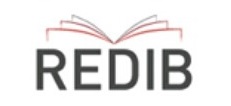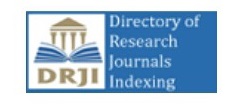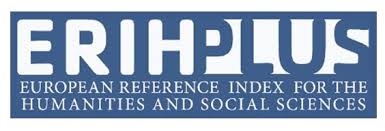Masonry structures assesment and photogrammetry. Ca-se study: San Millán de Segovia = Evaluación de estructuras de fábrica y levantamiento fotogramé-trico. Caso de estudio: San Millán de Segovia
DOI:
https://doi.org/10.20868/bma.2018.1.3709Keywords:
Photogrammetry, Masonry walls, Arches, Ortophoto, Photoelasticity, Fotogrametría, Estructuras de fábrica, Arcos, Ortofoto, Fotoelasticidad.Abstract
Abstract
The advanced technology of the new photogrammetric systems, whose progressive improvements could be due to both better resolution of the new cameras and the recent development of sophisticated interpolation algorithms, permits nowadays register not only the general aspect of the building architecture plan and elevations but also, learning in detail the geometry of the parts that integrate the building, and more significantly, the main elements of its structure. In fact, it has a great interest in many areas, and specially in masonry structures, where stability analysis require detailed information about the structural joints of the materials that set the element as well as the specific geometry of the junction that appears between the contact of one block with another. In this work, we demonstrate that a complex photogrammetry technique can be used as a geometric base to analyze masonry structures. The San Millan de Segovia's church is used as an example of structure for the study. This study addresses the different parts of the process, from the photogrammetric lifting to the simplification processes used for implementing this procedure automatically to any type of structure, pointing out the operational simplicity that this technique allows.
Resumen
La precisión de los nuevos sistemas de registro fotogramétrico, cuya progresiva mejora puede atribuirse tanto a la elevada resolución de las cámaras modernas como al reciente desarrollo de sofisticados algoritmos de interpolación, permite en la actualidad registrar no solamente las trazas generales de la planta y los alzados de un edificio sino, además, conocer en detalle la geometría de las piezas que lo componen, y muy señaladamente de los elementos que forman su estructura. Este hecho es de gran interés en muchos campos, y especialmente en el ámbito de las estructuras de fábrica, ya que los análisis de estabilidad de éstas precisan (al menos cuando se pretende incorporar al estudio el comportamiento local) de información detallada sobre la articulación de los materiales que las componen: trabas, aparejos o geometrías específicas de los lechos en los que unas piezas entran en contacto con otras. El presente trabajo desarrolla un caso concreto, el de la iglesia de San Millán de Segovia, un edificio en el que el levantamiento fotogramétrico complejo se ha empleado como base geométrica para el análisis de la estructura de fábrica. En este estudio se desarrollan las distintas fases del proceso, desde el levantamiento hasta los procesos de simplificación geométrica necesarios para poder implementar cualquier tipo de análisis estructural de forma automática, poniendo el énfasis en las facilidades operativas que posibilita esta técnica.
Downloads
References
Wittmann, W. ''Zur Theorie Der Gewölbe''. Zeitschrift Für Bauwesen (29), pp. 61-74, 1879.
Block, P., Ciblac T, Ochsendorf JA. ''Real-time limit analysis of vaulted masonry buildings. Comput Struct 84, pp. 1841-1852
Mark, R. ''Experiments in Gothic structure''. MIT Press (1984)
Montañés, J.M.R., “Enciclopedia del Románico de Castilla y León,” Segovia, Vol. III, , Ed. Fundación Santa María la Real, Centro de estudios del románico, 2002, pp. 1456-1480.
Torres Balbás, L. ''Restos de una techumbre de carpintería musulmana en la iglesia de San Millán de Segovia''. Al-Ándalus, v. III; pp. 424-434. ISSN 0304-4335
Nuere, E. ''Una hipótesis sobre la techumbre de San Millán de Segovia''. Estudios Segovianos nº 89. 1992
Fuentes González, P. (2013). ''Bóvedas de arcos entrecruzados entre los siglos X y XVI. Geometría, construcción y estabilidad''. Tesis (Doctoral), UPM.
Merino de Cáceres, J.M, "La torre de la iglesia de San Millán de Segovia y su construcción," IEEE Actas del cuarto congreso nacional historia de la construcción, , pp. 27-29, 2005.
Dodero, F.J.C., "Conservación de los monumentos de Segovia (1938-1952)", Revista Arte Español, Spain.
Gil, A.G. "Notas sobre la arquitectura restaurada de San Millán", Spain, 1977.
Geobit. PhotoScan software, 2006. Available: http://www.agisoft.es/products/agisoft-photoscan/
AutoCad v. 2014. Autodesk. Available: https://www.autodesk.es/products/autocad/overview
Visual computing laboratory. Meshlab software. Available: http://www.meshlab.net/
Bigoni, G.N.D. "Localized stress percolation through dry masonry walls". European Journals of Mechanics, 2009.
Huerta Fernández, Santiago. "Mechanics of masonry vaults: The equilibrium approach." (2001): 47-69.
Riveiro, B., Morer, P., Arias, P., y de Arteaga, I. 2011.''Terrestrial Laser Scanning y Limit Analysis of Masonry Arch Bridges''. Construction and Building Materials 25 (4): 1726-1735.
https://doi.org/10.1016/j.conbuildmat.2010.11.094
Rajchenbach, J. ''Stress Transmission trough a cohesionless material''. Mater. Phys. Mech. 3 (2001).
Guerra, M.. "Iglesia de San Millán de Segovia. Historia constructiva y ensayos fotoelásticos". Master's final project, Madrid, Escuela Técnica Superior de Arquitectura, Universidad Politécnica de Madrid. Spain, 2017.
Magdalena, García, J., Mencías, D. "Estructuras de fábrica: enfoques antiguos y modernos para fenómenos muy locales", Informes de la construcción, vol. 68, , pp. 1-8, Spain, april-june 2016. Available: https:// doi: https://doi.org/10.3989/ic.16.032
Magdalena, F., Aznar, A., Hernando, J.I. y García, J. "Linear programming as a tool to study the stability of masonry arch bridges", IABSE Madrid Symposium: Engineering for Progress, Nature and People, pp. 396-400, Spain, 2014. Available: https://doi.org/10.2749/222137814814027927
Downloads
Published
Issue
Section
License
The originals of Building & Management magazine are property of the Universidad Politécnica de Madrid, being necessary to cite the origin of any partial or total reproduction.
All the original articles published in Building & Management are subject to discussion and comments from our readers. Opinions should be sent to the journal's email address, within a period of three months, starting from the date of publication.
Authors retain the copyright of the papers and ensure B&M the right to have a Creative Commons license, Attribution-NonCommercial-NoDerivatives 4.0 International (CC BY-NC-ND 4.0), that allow others to share the article within an author recognition and non commercial use.
Authors can also establish independently aditional agreements for the not exclusive distribution of the article published versión in the e-journal (as, for example, to place it in an institutional repository or to publish it in a book).
Unless otherwise indicated, all contents of the electronic edition of Building & Management are distributed under a Creative Commons license and distribution.




 <
< 








